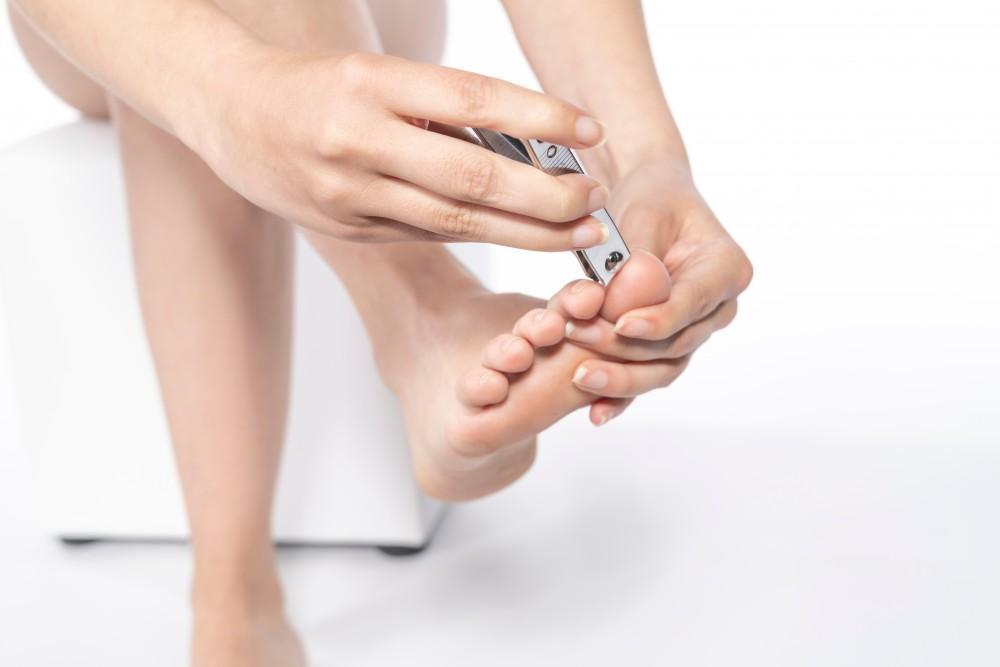
Remedy Ugly Yellow Toenail Fungus Before Sandal Season

With summer almost here, it’s time for bathing suits, barbeques, and backyard parties. And along with these summer favorites is something that 35 million Americans dread every time the weather gets nice. Sandal season!
When you suffer from toenail fungus, it can may your toenails turn yellow and thick and force you to abandon your gladiator sandals, flip flops, and other open-toed shoes, as the last thing you’re ready to do is show the world your ugly toenails.
Although you may think they look unsightly, toenail fungus is a common condition and covering it with nail polish can actually make the problem worse. Here at the Family Foot & Ankle Center of South Jersey, we can help you find the best treatment for your infection and prepare you for what to expect during the process. Before you know it, you and your toes will be ready for summer and sandals.
Toenail fungus 101
One of the first visible signs of a toenail fungal infection is the appearance of white or yellowish dots under the tip of the toenail. As the fungus spreads into the nail, your nail may thicken, become discolored, or even crumble along its edge.
When left untreated, toenail fungus can create even more damage to your nail. Your toenails may become significantly thicker and turn yellow or brown; they may also easily split and lift from the nail bed and they lose their firm attachment. If allowed to become severe, toenail infections may lead to nails that are white or yellow and feel soft and dry to the touch. At this advanced stage, the nail may even crumble when clipped.
The pain associated with toenail fungal infections develops when the fungus grows unchecked. It may become so bad, it can make it difficult to wear shoes without pain and discomfort.
Understanding what happens with a toenail fungal infection
The microscopic organisms that lead to a toenail infection thrive in the moist, warm environment provided when you cover your feet in socks and shoes. The fungus doesn’t need light to survive and invades your skin through tiny cuts and abrasions you can’t even see. Sometimes, the infections begin through a small separation between your nail and toe.
Some people may have a higher risk of developing a toenail fungal infection, including those who:
- Are older
- Use public pools, showers, or locker rooms
- Share nail items like nail clippers
- Get pedicures at salons
- Wear tight, closed shoes
- Have sweaty feet
- Smoke cigarettes
Those individuals with chronic, untreated athlete’s foot have a higher risk of toenail fungus, as do those who’ve had a toenail injury or previous infection. Chronic conditions, such as psoriasis, diabetes, and poor circulation, can also increase your risk of getting a toenail infection.
Early treatment is key
When it comes to treating toenail infections, early diagnosis and proper treatment is key to eradicating the fungus as quickly as possible. Once one toenail is impacted, the infection can spread to your other toenails, making treatment more challenging. Even worse, untreated nail fungus easily spreads to other people.
At Family Foot & Ankle Center of South Jersey, we often begin treatment by cutting back the infected nail to where it attaches to the toe. We may scrape the area to help get rid of some of the fungus and prescribe an oral antifungal medication. Taken over the course of 6-12 week, this medication allows a new, fungus-free nail to grow and replace the infected nail. Because of the slow growth of toenails, it can take up to four months for the infection to be truly eradicated.
For those with minor cases, an antifungal topical treatment may be enough to fight the infection. Depending on each individual case, antifungal nail polish or cream may be recommended. These topical treatment approaches are effective, but they work slower than oral antifungal medications and can take as long as 12-18 months to totally do away with your fungal infection.
Toenail fungal infections can be stubborn, but when you stick with your treatment method and use them exactly as your doctor recommends, you’ll be ready for summer and sandal season before you know it!
You Might Also Enjoy...


5 Ways to Keep Your Bunion Pain to a Minimum

Gout: What Is It and How Can I Get Rid of It?

Complications of an Untreated Ankle Sprain

Suspect You’ve Broken Toe? How To Tell and What to Do


